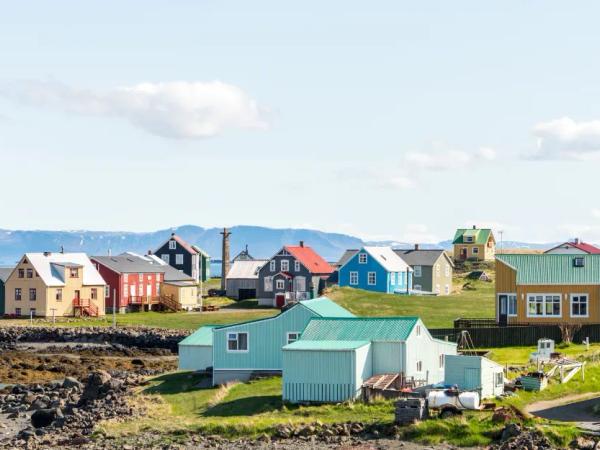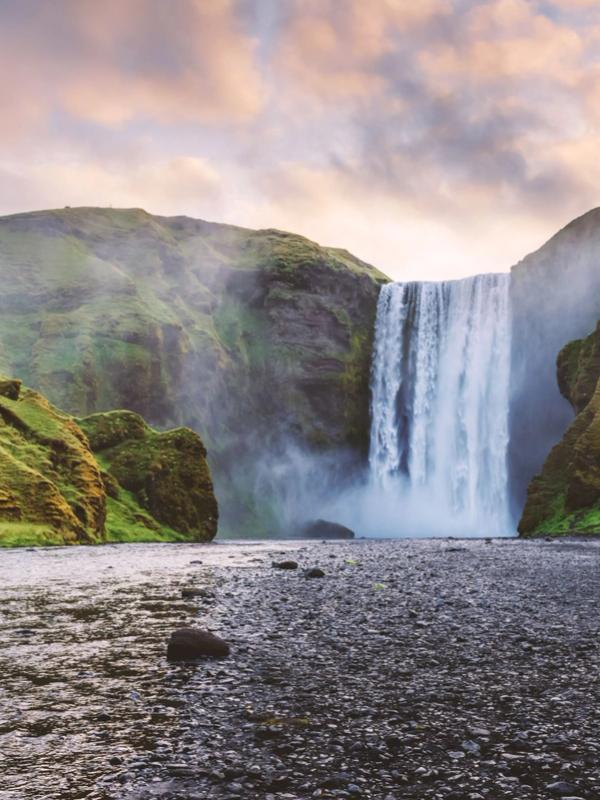
What to Expect: Weather in Iceland in August
August is the perfect month to visit Iceland. The weather is more stable than in other seasons, and the temperatures are warmer. However, you’re never safe from the infamous changing Icelandic weather.
Key Takeaways
- August in Iceland features mild and stable weather, with daytime temperatures around 14-15°C (57-59°F) and cooler nights, though conditions can change rapidly.
- Pack layered clothing and waterproof gear, including thermal layers, fleece tops, a waterproof jacket, long pants, hiking shoes, and a swimsuit for the varying weather.
- August is perfect for outdoor activities like hiking and whale watching. Due to tourist demand, plan and book in advance, and regularly check weather and road conditions.
Since Iceland’s main attractions are outdoors, understanding the Icelandic climate in advance is key to planning your trip properly.
In this guide, we will help you understand what to expect about the weather when visiting Iceland in August. We will also detail things to consider when packing your bags, and what activities are perfect for this month.
Understanding Iceland’s Weather in August
The weather in Iceland changes quite a lot from one season to another, even at a moment's notice within the same day.
Although there is no bad season or time to visit Iceland, August might be one of the best options. It's one of the warmest and most stable periods for the weather, and you can get up to 16 or 17 daylight hours thanks to the Midnight Sun phenomenon.
In fact, if you are planning to travel to our great country for the first time, summer is a fantastic time to do it. The softer weather and the extended hours of sunlight will make it easier for you to enjoy everything that this country has to offer—which is a lot!
What is The Average Temperature in August in Iceland?
In August, the temperature is mild during the day and cool at night, but never reaching freezing temperatures as one might expect.
It's important to point out that, although Iceland does not have a vast territory, the weather is not the same throughout the whole country.
The Southern Coast normally experiences higher temperatures than the North area, while the coldest region is the Central Highlands. However, the differences are not as high as in other countries.
In general, during August, the average maximum temperature in the country oscillates between 14 and 15 °C (57.2 to 59 °F). At night, it drops to around 8 or 9 °C (46.4 to 48.2 °F). Warm summer days can see the temperature rise to 20-25 °C (68 to 77 °F).
The highest temperature ever registered in Iceland was in 1939, when a record-high 30.5 °C (87 °F) was recorded in the Eastern Fjords.
Please be aware that the weather in Iceland, even in August, is constantly changing and is unpredictable. You may wake up under heavy rain just to find out that the sun is shining and there are no clouds on the horizon by the time you finish your morning coffee.
| Months | Average High | Average Low |
| June to August | 13°C / 54°F | 8°C / 46°F |
| September to November | 7°C / 44°F | 4°C / 39°F |
| December to February | 3°C / 37°F | -5°C / 23°F |
| March to May | 5°C / 41°F | 0°C / 32°F |
How Much Does it Rain in August in Iceland?
Iceland’s location in the North Atlantic Ocean is what makes the weather there so peculiar. Even though it's not as cold as one might expect, its unique position leaves the island exposed to wind and rain.
Although it's a rainy country in general, it’s not as rainy as other places further south and as exposed to the Atlantic Ocean as Iceland is. In fact, Iceland sees less rain in summer than Scotland, for instance.
Rain Patterns in August by Region
As you can imagine, there is no golden rule for predicting the rain. As with temperature, the amount of rain and the number of rainy days differ in different parts of the country.
The west and south coasts, more exposed to the changes of weather in the Atlantic, receive the most amount of rain. In contrast, the north, which experiences colder temperatures in general, and in August as well, is drier.
As mentioned before, this can all change at a moment’s notice, and it's quite common to experience different “seasons” on the same day. But, in general, August is a relatively dry month, with an average of 8 to 12 days of rain.
As the weather is so unpredictable, it's a good idea to carry a rain jacket or rain pants with you to help you deal with these sudden changes.
Even though it can occur, it's very unlikely to have snow in August. However, some areas can remain covered in snow from previous months, especially in the Central Highlands.
| Days | Place | Inches | Milimeters |
| 8 | Akureyri | 1.6 | 41 |
| 11 | Dalatangi | 5.2 | 131 |
| 13 | Keflavik | 3.5 | 88 |
| 12 | Reykjavik | 2.5 | 65 |
| 14 | Reynisfjara Beach | 5.5 | 140 |
| 10 | Stykkisholmur | 2.0 | 51 |
The Weather in Different Regions of Iceland in August
As you already know, the weather may change depending on the region of Iceland you are in. And even there, it can change depending on the day, or even the hour!
The best way to be one step ahead and plan your daily activities is to check the official website of the Icelandic Met Office.
They provide accurate forecasts for different regions.
August Weather in Reykjavík
Reykjavík, the capital of Iceland, is the northernmost capital of a sovereign nation in the world. It's located in the southwest region of the country. This area is characterized for its mild temperatures, but also a wetter and windier weather than the rest of the island.
August is, alongside July, the driest month of the year, making it a great time to visit the Icelandic capital.
The temperature during this month fluctuates between 10 and 15 °C (50 to 59 °F), with a couple of degrees up and down. It very rarely goes over 20 °C (68 °F). However, its location makes it prone to winds coming from the ocean, which may create the perception that it's colder than it actually is.
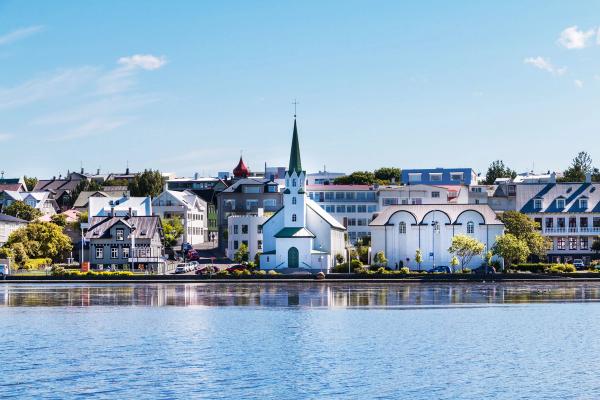
As soon as you move around the country from the capital, you will notice changes in temperature and other climatic elements.
South Iceland Weather in August
If you leave Reykjavík and start going south along the coast, you will soon realize that the temperature rises a bit. This area, as it happens in the capital, is exposed to winds and rain, but not as much in August as in other months throughout the year.
North Iceland weather in August
The north of Iceland is the driest but also the coldest part of the country, except for the Central Highlands. The main city in the region is Akureyri. The temperature here is lower than in Reykjavík, but the difference is not that big during the summer months. The chances of rain are also lower than in other parts of the island.
The Central Highlands in August
One of Iceland's most notorious natural attractions is the Central Highlands. This area covers most of the country's interior and includes some of the island's best-known landscapes, such as Landmannalaugar, Langjökull Glacier, or Hveravellir Nature Reserve.
Some parts of the Highlands are difficult to access and are only open to the public during the summer. In other seasons, the heavy snow or other climatic events force the authorities to close some roads in the area. For this reason, August is the perfect moment to discover this area of Iceland.
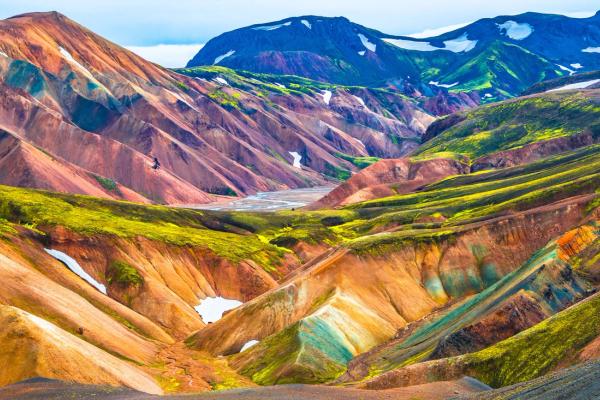
Still, if you are planning on visiting the Highlands, remember that the weather here is colder than in the lower regions. The temperature can drop considerably here, as there are many mountains in the area, with peaks reaching between 1,000 and 2,000 meters high.
August 2024 Weather Recap
August 2024 was chilly and wet all across Iceland. In many places, it was the coldest August this century, and rain was heavier than usual at several weather stations. To top it off, the air pressure was unusually low, with Reykjavík recording its lowest August pressure since 1820. The month also brought strong winds in many areas, and heavy rainfall caused flooding, landslides, and rising rivers. (Most of this information is from Vedur.is)
Temperatures
Last August was colder than usual everywhere. In Reykjavík, Akureyri, and Stórhöfði, it was the chilliest August since 1993.
- Reykjavík: The average temperature was 9.9°C (49.8°F), 1.2°C below the 1991–2020 average and 1.4°C lower than the past decade's average.
- Akureyri: The average temperature came in at 9.3°C (48.7°F), 1.5°C below the 1991–2020 average and 1.6°C below the past decade's average.
- Stykkishólmur: The monthly average was 9.5°C (49.1°F).
- Höfn in Hornafjörður: The average temperature was 10.0°C (50.0°F).
Highest & Lowest Averages Nationwide
Here are some average temperatures and how they compare previous data:
- The biggest temperature drop compared to the last decade was -2.2°C at Sátu, north of Hofsjökull. The smallest drop was -0.4°C in Öræfi.
- Average temperatures ranged from 11.1°C (52.0°F) at Steinar under Eyjafjöll to 3.0°C (37.4°F) at Gagnheiði.
- The warmest temperature of the month was 25.3°C (77.5°F) at Skjaldþingsstaðir on August 31st.
- The coldest temperature was -3.6°C (25.5°F) at Reykir in Fnjóskadalur on August 21st.
August 2024 Extremes
- Reykjavík's lowest temperature was 2ºC (35.6°F) on August 19th and 26th, while the highest temperature was 18ºC (64.4°F) on August 6th
- Akureyri's lowest temperature was 1ºC (33.8°F) on August 27th, and its highest was 19ºC (66.2°F) on August 31st.
Precipitation
Rain was relentless in August 2024, especially in northern regions. Some weather stations experienced their wettest August yet.
- Reykjavík: 87.2 mm, 35% above average for 1991–2020.
- Akureyri: 77.3 mm, a hefty 87% above average for the same period.
Notable Events:
- August 22nd–24th: Heavy rain hammered Strandir, Tröllaskagi, and the northern Westfjords, triggering floods and landslides.
- Late August: Intense rainfall drenched the southern and western parts of Iceland, including Snæfellsnes and Barðaströnd.
Sunshine Hours
August wasn’t exactly bright for most of Iceland.
- Reykjavík: 155.7 hours of sunshine, 9.1 hours below average for 1991–2020.
- Akureyri: 91.9 hours, which was 46.1 hours less than the average for the same period.
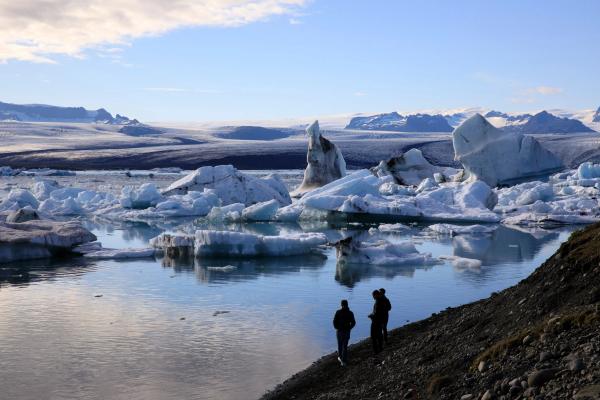
What to Pack For The Weather in August
Careful planning can make a huge difference in your travel experience when going to Iceland. You don't need to take a huge suitcase full of different clothes for all kinds of weather—you just need to be practical!
Layers and waterproof clothing will be your best allies in dealing with different climatic situations. Wearing different thin layers is better than a shirt and a thick coat.
A waterproof jacket and pants can also make a difference. Although August is relatively dry, rain is common and can happen suddenly.
It's advisable to always carry a small backpack with you. This way you can put on or take off clothing that helps you fight the constant changes in the weather. Fleece is a good material to consider.
Things to pack:
- Thermal clothing (base layer).
- Fleece tops.
- Waterproof jacket/pants.
- Long pants.
- Shorts.
- Hiking or trail shoes.
- Swimsuit.
What to do in Iceland in August
August is one of the best months to explore and visit Iceland. The mild weather and the long daylight hours will allow you to discover everything the country has to offer.
This month has become a popular time to visit the country among tourists. For this reason, plan your trip with as much time as possible.
We also recommend booking some activities in advance. This way, you won’t be disappointed by a last-minute canceled plan.
These are some of the best things you can do in Iceland in August:
- Hiking in the national parks of Iceland.
- Horseback riding: a great and fun way to explore some amazing landscapes.
- Whale watching, with tours from Húsavík and Reykjavík.
- Explore the geysers, glaciers, and geothermal pools.

Nature in August
Iceland's landscapes are unique and breathtaking. Not many places in the world offer such a wide range of astonishing natural wonders. Taking a bath in the Blue Lagoon—a geothermal spa—admiring the Seljalandsfoss Waterfall—an impressive 60-meter cascade—or visiting Vatnajokull National Park are just some of the many wonders Iceland has to offer.
In August, the whole land comes to life like in no other moment. This makes summer the best moment to discover Iceland at its best.
People who enjoy nature, hiking, or photography will fall in love with Iceland.
Cultural Events and Festivals in August
Iceland's already vibrant cultural life blooms during the summer. In August, there are plenty of art and music festivals around the country.
Tips For Your Trip, With the Weather in Mind
Here are some basic tips you may want to consider while planning your trip to Iceland in August:
- Pack lightly but wisely.
- Plan and book things in advance.
- Be respectful of nature, it’s Iceland’s most precious treasure (well, you should apply this everywhere!).
- Check the weather forecast regularly.
- Check the road conditions before starting your day.
- Guided tours are a good option, especially for remote areas.
Take Advantage of August's Weather in Iceland
Visiting Iceland in August is a fantastic option to make the most of your trip, especially if you are visiting the country for the first time. During this month, it’s easier to move around as roads are unlikely to be closed due to adverse climatic elements.
This month is one of the warmest and driest of the year. However, it’s important to bear in mind that the weather changes constantly in Iceland, sometimes during the same day. Although it’s a relatively dry month, Iceland is a rainy country, so be prepared to protect yourself from the rain.
Dress with thin layers and waterproof clothing. And don’t forget to check the weather forecast every day!

